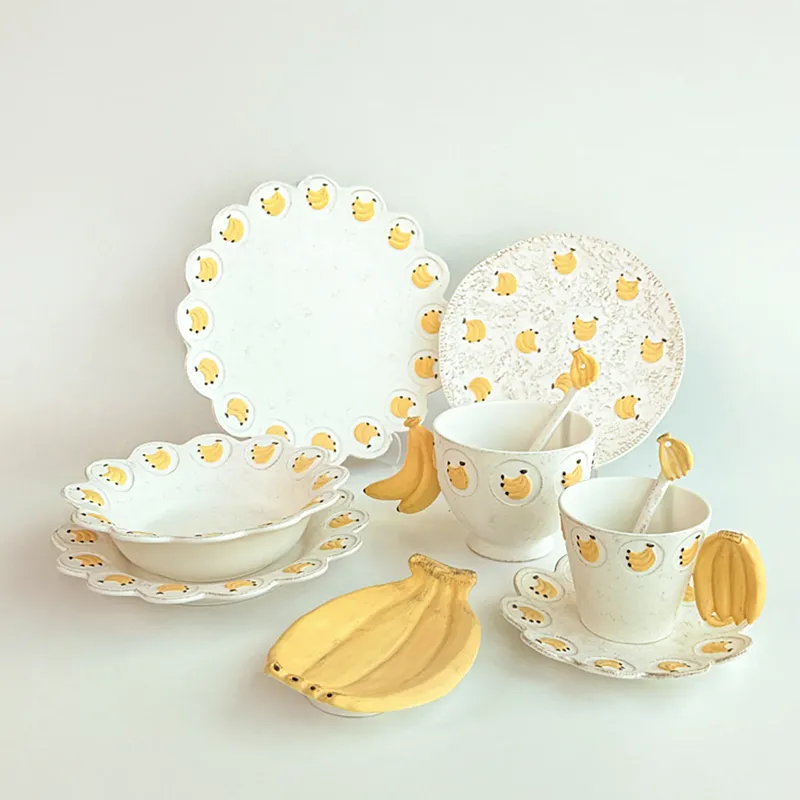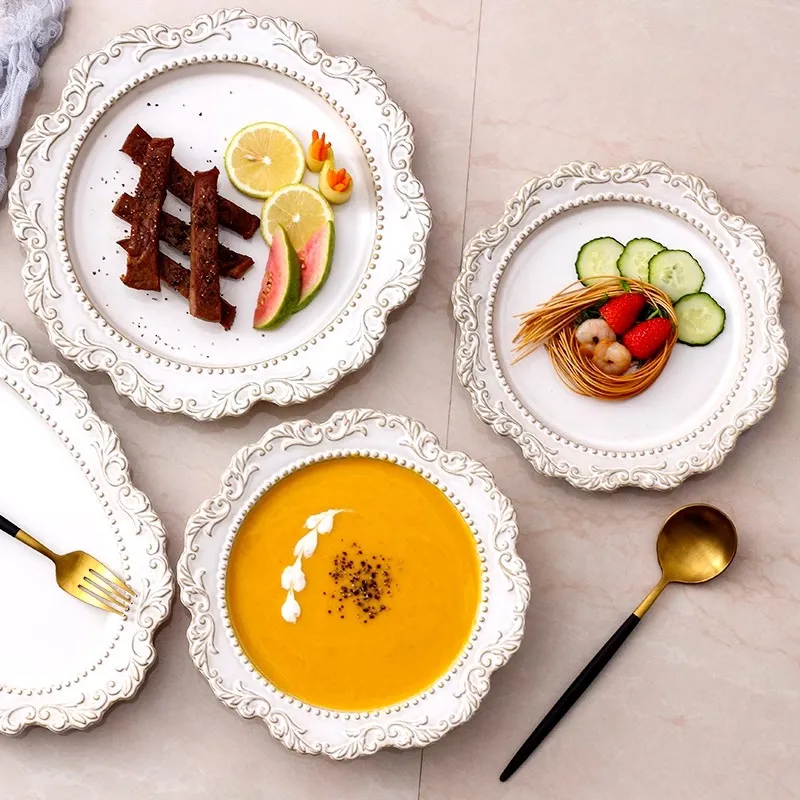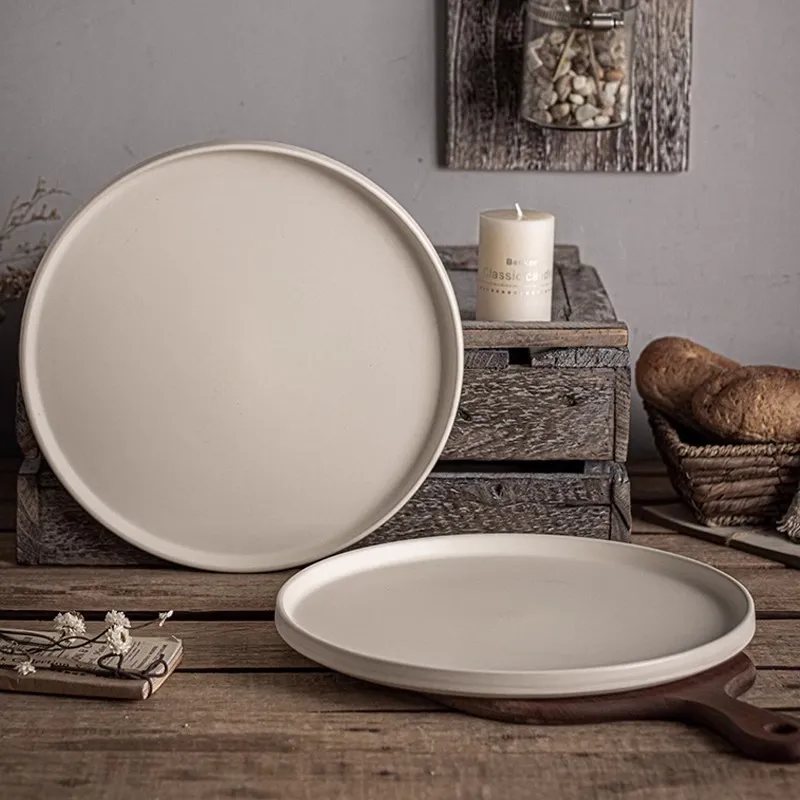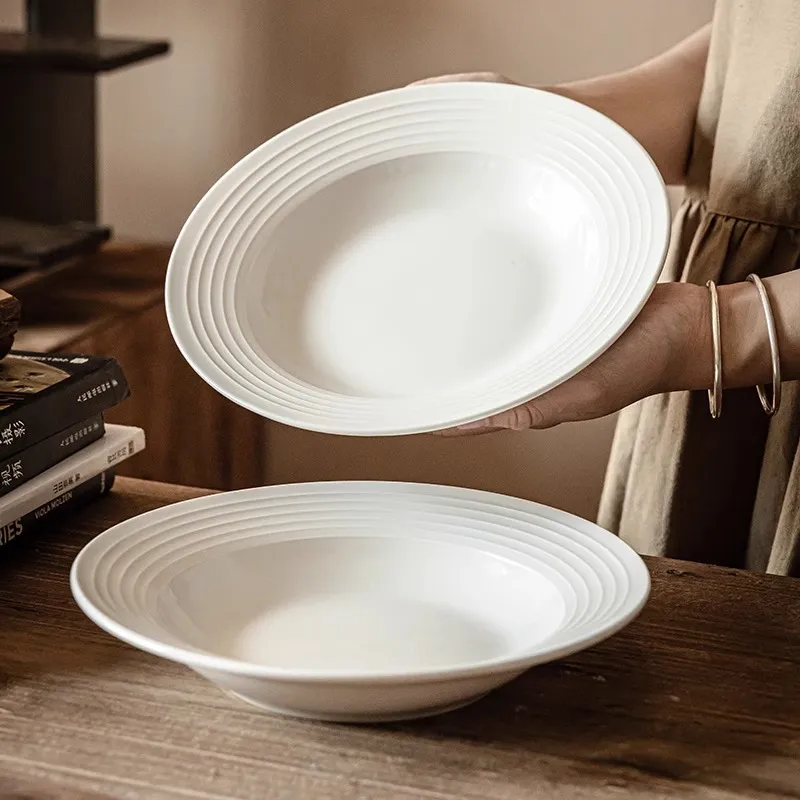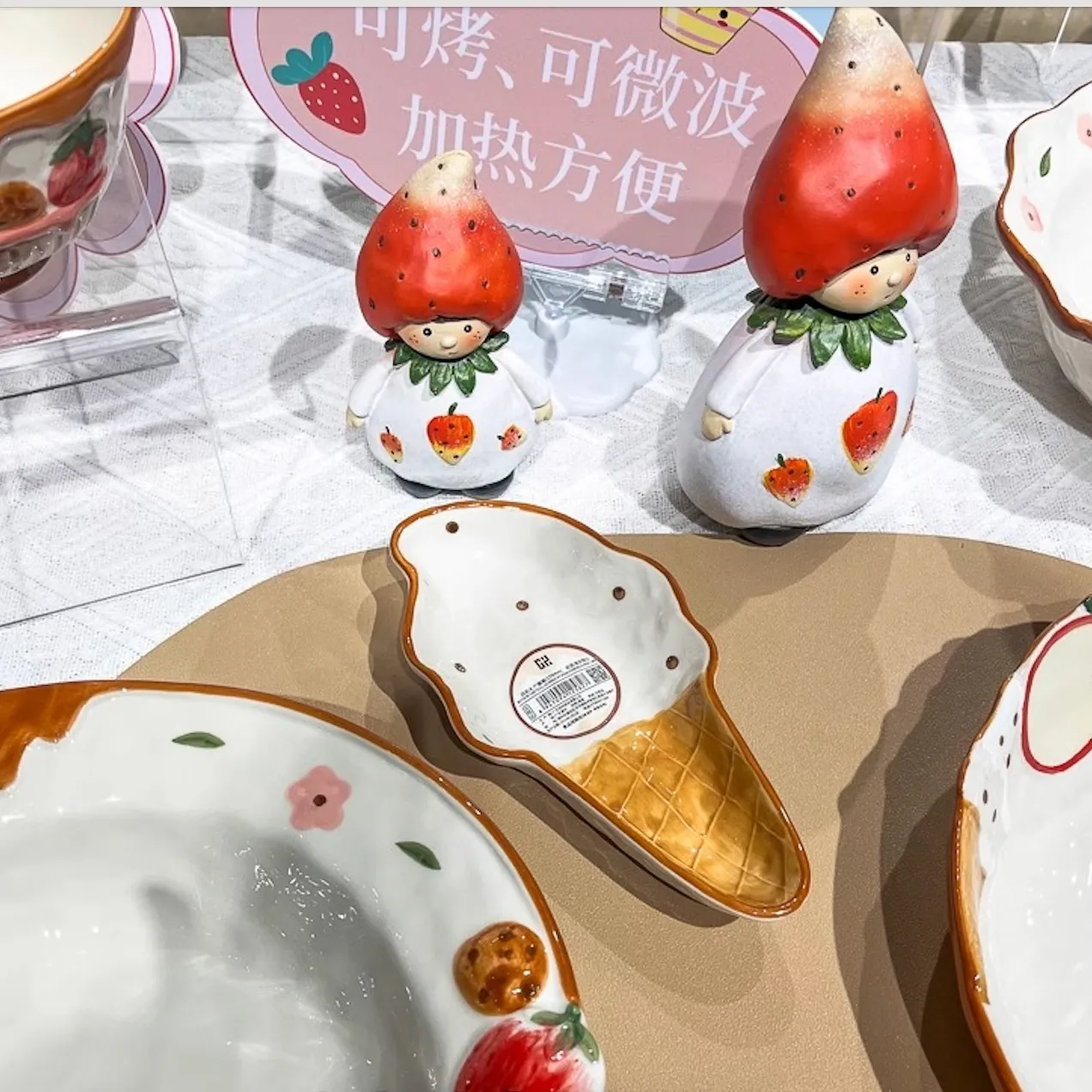A la hora de seleccionar una vajilla al por mayor, la elección entre cerámica y porcelana es una decisión fundamental que afecta a la durabilidad, la estética, las situaciones de uso y la satisfacción del cliente. Ambos materiales cumplen funciones diferentes en los sectores de la restauración y el comercio minorista, y entender las diferencias es esencial para los mayoristas que deseen tomar decisiones de compra informadas.
¿Qué son la cerámica y la porcelana?
La cerámica y la porcelana difieren principalmente en su composición, resistencia y aspecto, elementos cruciales a la hora de evaluarlas para su uso mayorista o comercial.
| Material | Descripción | Nombres de uso común |
| Cerámica | Término general que designa los objetos fabricados con arcilla y cocidos a altas temperaturas. Incluye varios tipos, como la loza y el gres. | Alfarería, vajilla de cerámica en general |
| Porcelana (Bone China) | Tipo de cerámica de alta cocción con textura fina y alta transmisión de la luz. Contiene ceniza de hueso para aumentar su resistencia y translucidez. | Loza fina, porcelana fina |
Cerámica frente a porcelana: Comparación de prestaciones
La comparación entre cerámica y porcelana muestra claramente por qué la porcelana, especialmente la porcelana china, se prefiere a menudo en restaurantes y hoteles de alta gama.
| Criterios | Vajilla de cerámica | Vajilla de porcelana (Bone China) |
| Durabilidad | Menos resistente a los golpes, más grueso y pesado | Alta resistencia, más resistente a los impactos |
| Apariencia | Más apagado, blanco azulado, poca transparencia | Translúcido, blanco lechoso, brillo elegante |
| Peso | Más pesado, menos cómodo para el personal de servicio | Ligero, ideal para un servicio eficiente |
| Retención del calor | Aislamiento moderado | Excelente retención térmica |
| Facilidad de limpieza | Más difíciles de limpiar con el tiempo, especialmente las superficies rayadas | Esmalte liso, fácil de limpiar y mantener |
| Experiencia de uso | Robusto pero voluminoso | Ligereza y tacto premium |
Seguridad y salud
A la hora de elegir entre cerámica y porcelana, los compradores B2B deben tener en cuenta la seguridad alimentaria y el cumplimiento de la normativa:
Riesgo de metales pesados: Evite la cerámica sobreesmaltada con colores brillantes a menos que esté certificada. La porcelana bajo vidriado o esmaltada es más segura.
Tratamiento previo al uso: Sumergir los objetos de cerámica en vinagre diluido puede ayudar a eliminar las sustancias residuales.
Adecuación para niños: La cerámica es más frágil y menos adecuada para el uso infantil sin supervisión. La porcelana de hueso, aunque duradera, sigue siendo quebradiza.
Elección de cerámica frente a porcelana para aplicaciones específicas
Uso doméstico
Presupuesto ajustado: opte por la cerámica si el precio es un factor clave.
Sensación Premium: La porcelana proporciona una mejor estética y mejora la presentación de la comida.
Restauración comercial
La porcelana de hueso ofrece el mejor valor en términos de eficacia del servicio, experiencia del cliente y durabilidad a largo plazo en restaurantes y hoteles.
Mercado de regalos
Las vajillas de porcelana o loza son ideales para regalos de lujo.
La vajilla de cerámica es más adecuada para regalos prácticos de gran consumo.
Consideraciones para la venta al por mayor de cerámica frente a porcelana
Comparación de precios
| Material | Precio de referencia al por mayor (por juego) |
| Cerámica | ¥75-¥85/set (se puede negociar más barato en grandes cantidades) |
| Porcelana (Bone China) | Mayor debido a la complejidad de los materiales y la fabricación |
Calidad y postventa
Elija proveedores con un etiquetado claro de los productos (información de fábrica, normas de seguridad).
Busque proveedores que ofrezcan un servicio posventa fiable en caso de productos dañados o problemas con los lotes.
Tendencias de la demanda
Se espera que el mercado mundial de vajillas de cerámica crezca de 10.800 millones de USD (2024) a 17.870 millones de USD (2033), con una CAGR de 5,76%. El centro mayorista chino de vajillas de Guangzhou aporta casi 40% de exportaciones de vajillas de hostelería, un punto de abastecimiento crítico.
En proyectos hoteleros de gran envergadura, suele ser más eficaz abastecerse de porcelana o cerámica directamente a los fabricantes que disponen de catálogos completos.
Conclusión: ¿Cuál elegir?
Al comparar cerámica frente a porcelana:
Elija la cerámica si sus prioridades son la asequibilidad, el diseño sencillo y la durabilidad general.
Elija porcelana si valora la elegancia, la retención del calor, la ligereza y una experiencia gastronómica de primera calidad.
Tenga en cuenta el escenario de uso, las expectativas del cliente y el rendimiento a largo plazo a la hora de tomar decisiones de compra.
Acerca de Yicheng Ceramics
Cerámica Yicheng es un fabricante líder especializado en vajilla de cerámica y porcelana. La empresa realiza pedidos personalizados y al por mayor adaptados a las necesidades de restaurantes, hoteles, minoristas y distribuidores. Tanto si necesita una vajilla de cerámica clásica como porcelana fina, Yicheng Ceramics le ofrece soluciones duraderas, estéticas y flexibles con una gran capacidad de fabricación y opciones de servicio flexibles.


